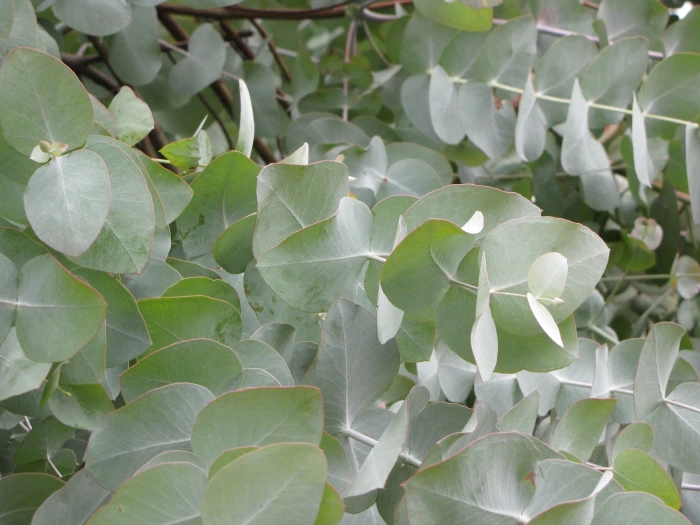Argyle Apple
(Eucalyptus cinerea)
Argyle Apple (Eucalyptus cinerea)
/
/

Forest and Kim Starr
CC BY 3.0 us
Image By:
Forest and Kim Starr
Recorded By:
Copyright:
CC BY 3.0 us
Copyright Notice:
Photo by: Forest and Kim Starr | License Type: CC BY 3.0 us | License URL: https://creativecommons.org/licenses/by/3.0/us/deed.en | Uploader: Tyler ser Noche | Publisher: Wikimedia Commons | Title: Starr-100615-7010-Eucalyptus_cinerea-leaves-Alii_Kula_Lavender_Farm_Waipoli_Rd-Maui_(24922189842).jpg | Notes: Transferred from Flickr via #flickr2commons |































































Estimated Native Range
Climate Requirements for West Covina, California
| This Plant | Your Site | Plant Suitability for Your Location | ||
|---|---|---|---|---|
| • Precipitation | 9" - 110" | 16" | Your precipitation may be insufficient for this plant. Irrigate N" / year. | Irrigate N" / year |
| • High Temp. | 65°F - 105°F | 90°F | Your summer temperatures are normal for this plant. | Excellent |
| • Low Temp. | 3°F - 72°F | 42°F | Your winter temperatures are normal for this plant | Excellent |
This plant should grow well at your location with about N inches per year (Y minutes per month) of irrigation.
Summary
Eucalyptus cinerea, commonly known as Argyle Apple or Silver Dollar Tree, is an evergreen tree endemic to the woodlands and grasslands of southeastern Australia, particularly in New South Wales and Victoria. It is a small- to medium-sized tree that typically grows to a height of 15–30 m (49–98 ft) with a spreading crown. The bark is rough and fibrous on the trunk and branches. The foliage consists of juvenile, glaucous, egg-shaped leaves that are often used in floral arrangements. The white flowers are arranged in groups of three and bloom between May and November in its native habitat, followed by conical to bell-shaped fruit. The flowers are not particularly showy, but the foliage is highly valued for its ornamental qualities.
Argyle Apple is appreciated for its attractive, blue-gray foliage and is often used in gardens for its unique texture and color contrast. It is suitable for urban planting, as a specimen tree, and is also popular in cut flower arrangements. This species requires full sun and can tolerate a range of soil types, provided they have medium to fast drainage. It is relatively drought-tolerant once established. However, Eucalyptus cinerea can be potentially invasive outside its native range, and gardeners should check local regulations before planting. It is also susceptible to eucalyptus gall wasp and can suffer from root rot in poorly drained soils.CC BY-SA 4.0
Argyle Apple is appreciated for its attractive, blue-gray foliage and is often used in gardens for its unique texture and color contrast. It is suitable for urban planting, as a specimen tree, and is also popular in cut flower arrangements. This species requires full sun and can tolerate a range of soil types, provided they have medium to fast drainage. It is relatively drought-tolerant once established. However, Eucalyptus cinerea can be potentially invasive outside its native range, and gardeners should check local regulations before planting. It is also susceptible to eucalyptus gall wasp and can suffer from root rot in poorly drained soils.CC BY-SA 4.0
Plant Description
- Plant Type: Tree
- Height: 6-10 feet
- Width: 2-4 feet
- Growth Rate: Rapid
- Flower Color: N/A
- Flowering Season: Summer
- Leaf Retention: Evergreen
Growth Requirements
- Sun: Full Sun
- Water: Medium
- Drainage: Medium, Fast
Common Uses
Bee Garden, Bird Garden, Butterfly Garden, Drought Tolerant, Fragrant, Hummingbird Garden, Low Maintenance, Potted Plant, Salt Tolerant, Street Planting
Natural Habitat
Woodlands and grasslands of southeastern Australia
Other Names
Common Names: Mealy Stringbark, Silver Dollar Tree, 銀葉桉
Scientific Names: Eucalyptus cinerea
GBIF Accepted Name: Eucalyptus cinerea F.Muell. ex Benth.